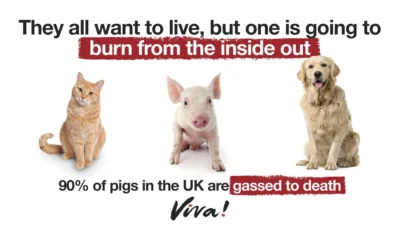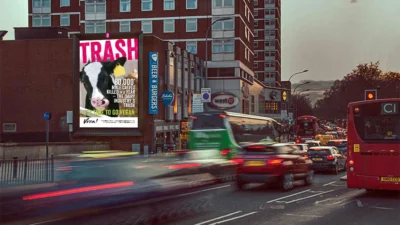Go vegan to reduce the risk of future pandemics

A new study, published in the journal Cell, points to wild animals being sold at a wet market in Wuhan in China, as the likely source of the covid-19 pandemic.
While bats are thought to have been the natural host of the SARS-CoV-2 virus, it’s thought that an intermediate wild animal became infected and brought it to the market, where it spread to other animals and people. The most likely animals who were the source of the virus that sparked the pandemic include raccoon dogs, masked palm civets and hoary bamboo rats.
Genetic testing on 800 samples collected during the early days of the outbreak suggests the virus spread from animals to people at the Huanan seafood market, that sold these live animals.
Traces of these animals were found in exactly the same stalls as SARS-CoV-2, says co-author Edward Holmes at the University of Sydney. “This suggests – but does not prove – that the animals were infected. Hence, it is very likely that SARS-CoV-2 emerged in a live animal market” says Holmes.
“All the scientific data point one way – to SARS-CoV-2’s natural zoonotic origin in the Huanan market, Wuhan,” says Holmes.
Co-author Zach Hensel at NOVA University Lisbon in Portugal, says the study highlights the preventable risks posed by the human-wildlife interface.
This comes as authorities in the Moyo District, located in Northern Uganda, have imposed a ban on consuming wild animals, including monkeys, in an effort to curb the spread of another zoonotic disease – mpox.
The World Health Organisation (WHO) has declared the mpox outbreak a global health emergency as case numbers soar in central Africa and mpox is reaching countries where it has not been previously seen.
While illegal wildlife trade plays a significant role in the spread of zoonotic diseases, the increasing intensity of animal farming also poses a serious threat. The 2009 swine flu pandemic, for example, arose from a pig farm in Mexico but the ‘recombinant’ virus was the direct result of international trading of live pigs – referred to by scientists as ‘mixing vessels’ as they provide an ideal environment for a virus to mix, mutate and spread to humans.
Also in the news, the bird flu virus H5N1 has been detected in over 200 dairy herds across 14 states in the US, causing concerns about the potential pandemic risk. Scientists have criticised the lack of monitoring saying that this virus may be mutating under the radar!
According to the WHO, 75 per cent of the 30 emerging infectious diseases in the past three decades are zoonotic, meaning they come from animals, including HIV-AIDS, Ebola, rabies, malaria and more recently, covid-19. The exploitation, misuse and abuse of wild and farmed animals is pushing us closer to the next pandemic – it’s time to go vegan now!




